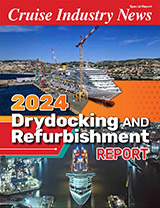“We are searching for destinations, not ports,” said Javier Marin Martinon, itinerary planning director at Pullmantur. “Our ports of call are there for the experience they offer.”
Martinon was speaking at the MedCruise General Assembly, which took place in late May in Valletta, Malta.
Asked by a port representative, Martinon described the process behind itinerary planning for Pullmantur Cruises and its fleet of four ships.
Spanning the globe, Pullmantur has deployment in South America, the Caribbean, the Canary Islands, Mediterranean and Northern Europe. Next winter, the Spanish brand heads to the Red Sea.
He said the first element was the region the ship is deployed.
“We are looking at the itineraries, not the (individual) ports,” he explained. “For every region, we get feedback from guests and crew, and the rate (revenue).”
He said the revenue of an itinerary as the sum of many factors. First, on the cost side, the cruise operator must take into account port fees, fuel use, logistics, supply chain and crew regulations.
“Then we look at the income, including ticket cost and onboard revenue,” he said.
For Pullmantur, the product is matched to its guest demographic of mainly Spanish passengers.
“We like late arrivals, late departures and a good mix of ports,” Martinon explained.



